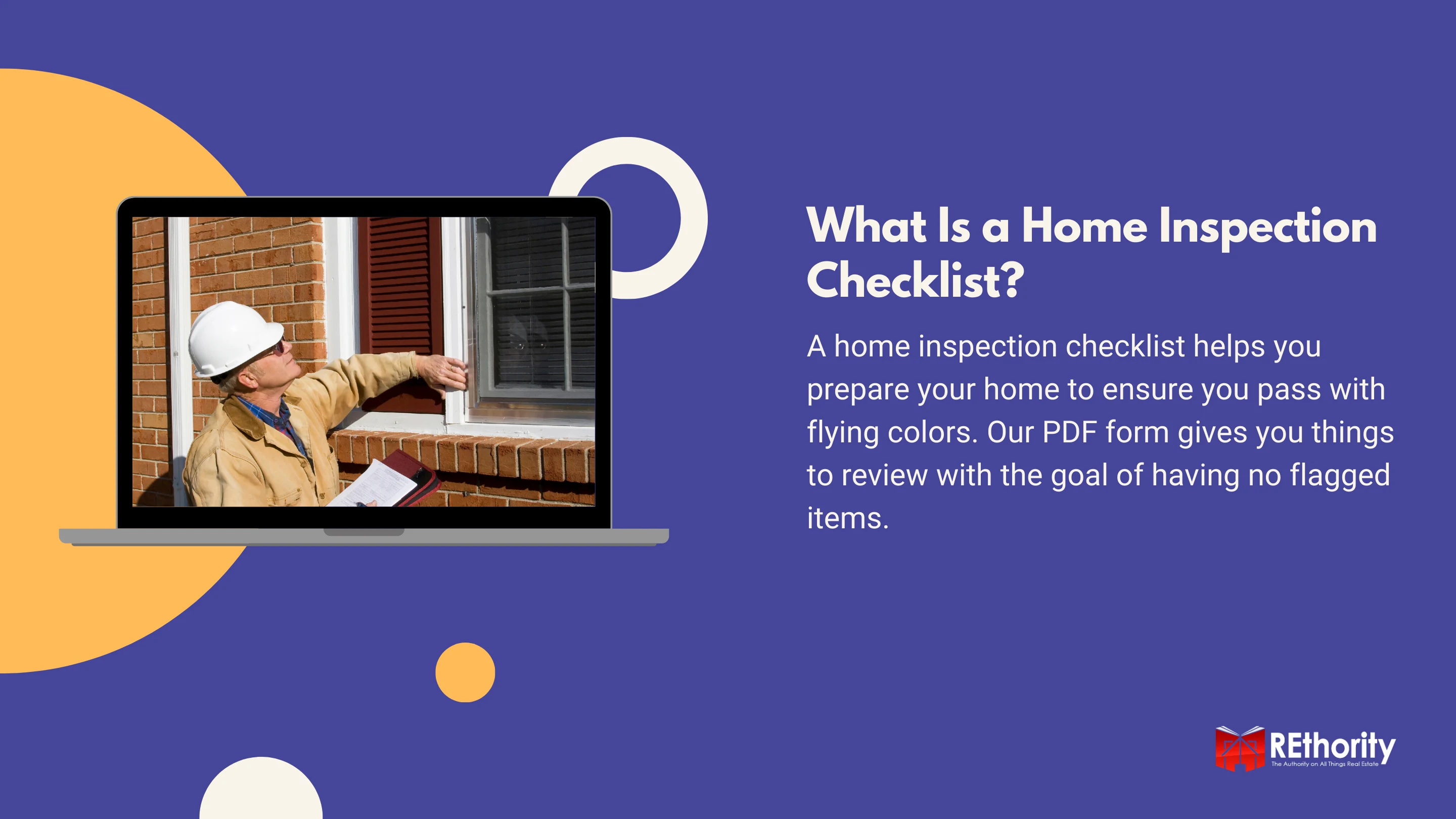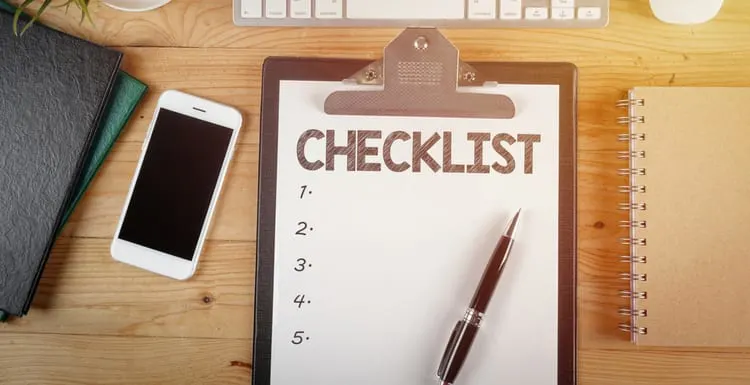By using our home inspection checklist, you can prepare yourself to pass with flying colors.
But what does it cover? And what are the steps you need to take? Read on to learn more.
Why Use Home Inspection Checklists?

An inspection is your opportunity to ensure your home is ready and has no hidden problems.
These may include leaks, termites, cracks in the foundation, or other issues that could force you to pay for expensive repairs.
Make sure you know exactly what you’re buying by following our home inspection checklist. When you walk through the house, you should note:
- The current condition of the home
- What needs attention or repairs?
- Required maintenance work needed once you move in
You’re definitely going to want to know if your home is in perfect condition or has a long list of much-needed problems awaiting the buyer.
PDF Home Inspection Checklist
To be sure you won’t miss anything, use our PDF inspection checklist that you can find by following the link below.
Home Inspection Tips
In addition to our home inspection checklist, we’ve broken down the inspection process in greater detail.
Read on to learn the steps of this process and why you should use a home inspection checklist if you choose not to hire an inspector.
1. Find a Qualified Home Inspector
There are different ways to find a qualified home inspector. The American Society of Home Inspectors is a good online source for verifying who is fully licensed in your state.
Also check with your realtor, family members, and friends to see who they recommend.
2. Create a Checklist
Have a checklist ready for your home inspector for any areas of the home you’re concerned about. The inspector will likely see these, but it doesn’t hurt to point them out beforehand.
These areas may include the home’s foundation, roof, attic space, electrical panel, thermostats, plumbing, doors, or windows. Depending on the size of the home, it may also include porches, basements, and garages.
3. Check the Grounds
A proper inspection of the grounds should ensure the home has proper drainage, no leaks or evidence of standing water, sound exterior structures (fences, decks, etc.), and adequate railings.
4. Inspect the Interior
When examining the rooms, be certain there are no stains on the floors, walls, or ceilings and that the flooring material is sound. Also, be sure there are no cracks in the walls or ceilings.
Be sure that windows can open and shut easily, interior doors can latch properly, light switches operate properly, electrical outlets test fine, and heating and cooling systems work.
5. Inspect Bathrooms
Key things to look for here include adequate flow and pressure at all fixtures; proper drainage in the sink, tub, and shower; plumbing in good condition; no signs of rust in metal appliances; a toilet that operates properly and is stable; and no stains or evidence of past leaks.
6. Check HVAC Systems
Important things to inspect include visible wiring, a service panel, no rust around your cooling unit, and ductwork that is in good condition.
Additionally, we suggest removing a return air register to ensure the ductwork is free from pet hair. This may save you from allergy issues in the future.
7. Inspect The Kitchen
Look in particular to the fact that the dishwasher drains properly, there are no leaks in the pipes under the sink, built-in kitchen appliances are operating properly, and cabinets are in good condition.
8. Excluded Items
Inspectors are primarily interested in the physical components of your home, so not everything gets included.
What will sometimes get left out are trees and landscaping, lawn sprinklers, and internet service.
It’s up to you to discuss with the inspector whether you want all areas included in the inspection.
Should You Use a Home Inspection Checklist?
Whether or not you hire a home inspector, it’s prudent to use a home inspection checklist. This will ensure you’ve thoroughly reviewed the property for issues.
It may also save you thousands of dollars on future repairs. This only takes a moment of your time, so make sure not to skip the home inspection!

